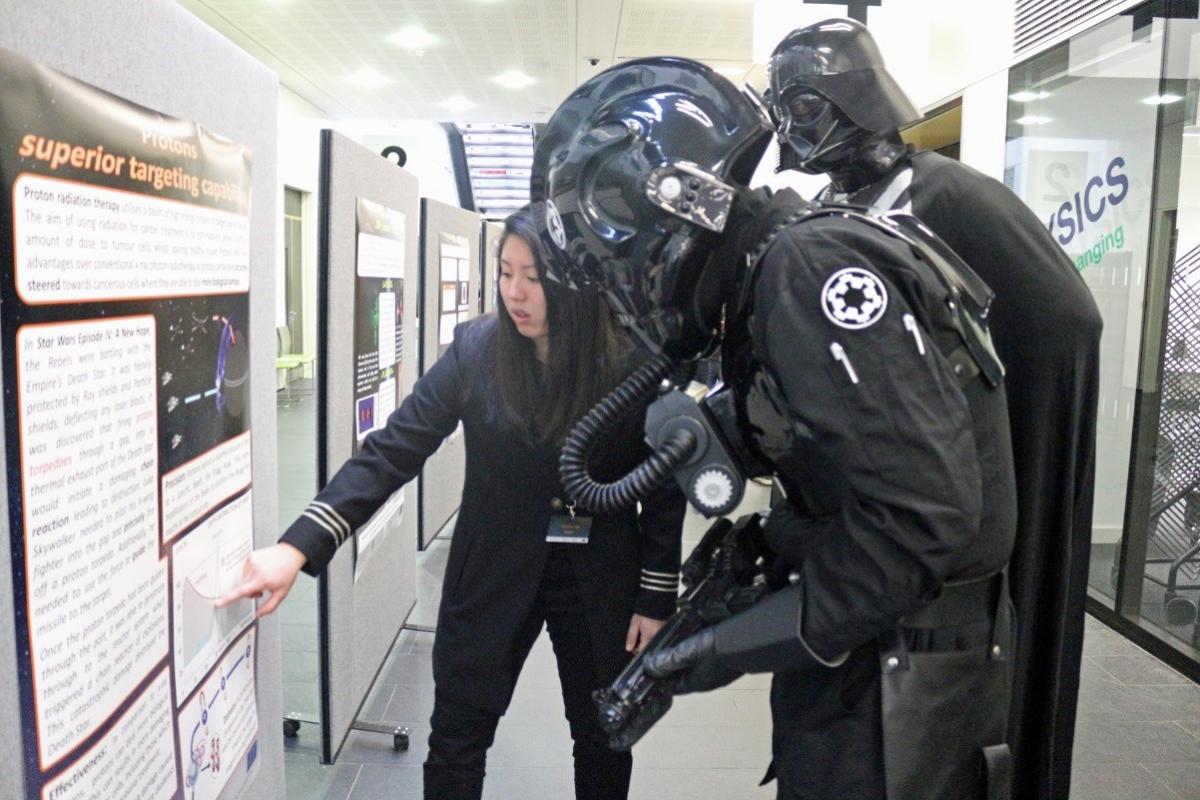Light sabres, hyper speed and droids – how do they all connect with the latest accelerator research? With the imminent launch of “The Last Jedi”, Professor Carsten Welsch, Head of Physics at the University of Liverpool and Head of Communication for the Cockcroft Institute, has explored the “Physics of Star Wars” in an event on 27th November designed to introduce cutting-edge accelerator science to hundreds of secondary school children, undergraduate and PhD students, as well as university staff.
The day started with a lecture which first presented iconic scenes from the movies to then explain what is possible with current technology and what remains fiction. For example, a lightsabre, as shown in the film, wouldn’t be possible according to the laws of physics, but there are many exciting applications using lasers. There is a link to advances in lasers and laser acceleration being studied by an international collaboration within the EuPRAXIA project. This programme is developing the world’s first plasma accelerator with industry beam quality. It uses a high intensity laser pulse to drive an electron beam and accelerate this to high energies. Applications in science or industry that are close to a light sabre include for example 3D printing of metals and laser cutting.
Professor Welsch said: “In the very first movie from 1977, the rebels have used proton torpedoes that make the Death Star explode as their lasers wouldn’t penetrate the shields. I linked that to our use of ‘proton torpedoes’ in cancer therapy. Within the pan-European OMA project we are using proton beams to target something that is hidden very deep inside the body and very difficult to target and destroy.”

OMA Fellow Jacinta Yab explaining the use of ‘proton torpedoes’ in cancer therapy (Image credit: QUASAR Group)
The light and dark side of the Force in Star Wars was an ideal opportunity to talk about matter and antimatter interactions which are currently being explored at CERN’s AD and ELENA storage rings, as well as within the brand-new Marie Sklodowska-Curie research network AVA. Finally, participants learned about how high energy colliders, such as the LHC, its high luminosity upgrade or a potential Future Circular Collider (FCC) as it is being studied within the EuroCirCol project, can provide fantastic opportunities to study the force(s).

High school students participating in hands-on activities during ‘Physics of Star Wars’ event. (Image credit: QUASAR Group)
After the lecture, all participants were given the opportunity to understand the science behind Star Wars through numerous hands-on activities in the university’s award-winning Central Teaching Laboratory. This included laser graffiti, augmented reality experiments with Star Wars droids and virtual accelerators using AcceleratAR, and even two full-scale planetariums which fully immersed participants into the world of Star Wars, deflecting charged particle beams using Helmholtz coils.
Professor Welsch and members of his QUASAR Group had the kind permission of Lucasfilm to use film excerpts; these were complemented by Lego Star Wars models, a real cantina as found in the movies, storm troopers and even Darth Vader himself! Many photographs from the exciting day can be found on Twitter at https://twitter.com/livuniphysics
Lucasfilm had no involvement in the preparation or delivery of the event which was organised only by staff and students from the University of Liverpool.
Header image: Prof Carsten Welsch presenting the ‘Physics of Star Wars’ (Image credit: QUASAR Group)


